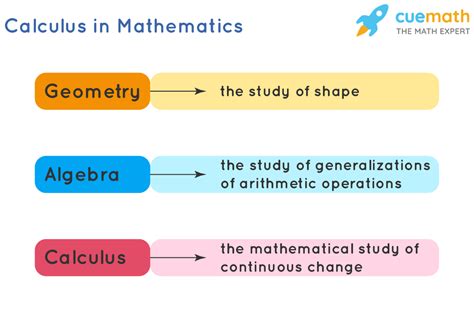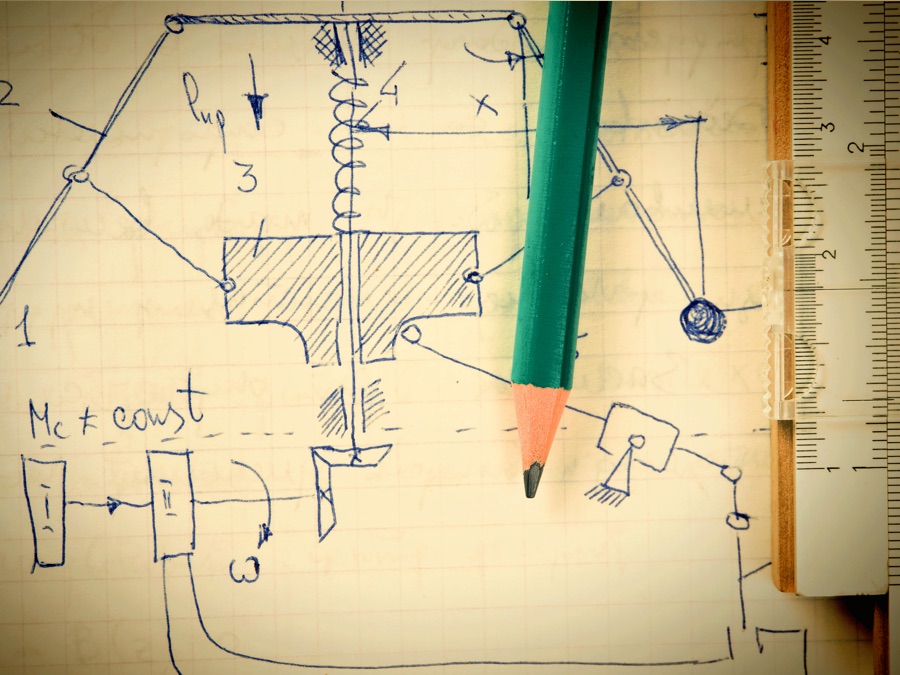The Essential Guide to Understanding Calculus

Understanding Calculus: A Comprehensive Overview

Calculus, a fundamental branch of mathematics, plays a pivotal role in shaping our understanding of the world around us. It is a powerful tool that allows us to analyze and model complex phenomena, from the motion of planets to the growth of populations. In this guide, we will embark on a journey to unravel the mysteries of calculus, exploring its core concepts, applications, and the profound impact it has on various disciplines.
At its core, calculus is the study of change and motion. It provides us with the mathematical machinery to quantify and understand how quantities vary over time or with respect to other variables. This powerful framework has revolutionized fields as diverse as physics, engineering, economics, and even biology, offering insights into the very fabric of the universe.
The Building Blocks: Differentiation and Integration
Calculus is built upon two fundamental concepts: differentiation and integration. Differentiation is the process of finding the rate of change of a function, allowing us to determine how quickly a quantity is changing at any given point. This concept is crucial for understanding motion, acceleration, and the behavior of systems over time.
On the other hand, integration is the inverse process, involving the computation of the area under a curve. It enables us to calculate accumulated quantities, such as the total distance traveled or the total revenue generated over a specific period. Together, these two concepts form the backbone of calculus, providing a robust framework for analyzing dynamic systems.
Historical Evolution: A Journey Through Time
The development of calculus is a fascinating tale spanning centuries. Its origins can be traced back to ancient civilizations, where early attempts to understand motion and area led to the emergence of geometric concepts. However, it was during the 17th century that calculus truly came into its own, thanks to the groundbreaking work of mathematicians like Isaac Newton and Gottfried Wilhelm Leibniz.
Newton, driven by his quest to understand the motion of celestial bodies, developed a mathematical framework known as fluxions. This early form of calculus allowed him to describe the changing positions of planets and paved the way for his seminal work, the Principia Mathematica. Simultaneously, Leibniz independently developed his own calculus system, introducing the familiar notation we use today, including the integral symbol ∫.
The subsequent evolution of calculus involved refining these initial ideas, with mathematicians like Joseph-Louis Lagrange and Carl Friedrich Gauss making significant contributions. Over time, calculus became an indispensable tool for scientists and engineers, enabling them to tackle complex problems and make groundbreaking discoveries.
Applications Across Disciplines
Calculus finds its application in virtually every scientific and technological field. In physics, it is used to describe the motion of objects, from the trajectory of a baseball to the complex orbits of planets. Engineers rely on calculus to design structures, optimize systems, and analyze the behavior of fluids and materials.
Economists use calculus to model supply and demand curves, optimize production processes, and understand the dynamics of financial markets. In biology, calculus plays a crucial role in studying population growth, ecological interactions, and the spread of diseases. Even in fields like computer science and artificial intelligence, calculus is essential for developing algorithms and optimizing machine learning models.
Practical Example: Population Growth and Decay
To illustrate the practical application of calculus, let’s consider the problem of modeling population growth and decay. Suppose we have a population of bacteria, and we want to understand how it changes over time. By applying calculus, we can develop a mathematical model that describes this growth or decay.
Using differentiation, we can find the rate of change of the population with respect to time. This derivative gives us an instantaneous snapshot of how the population is growing or shrinking at any given moment. On the other hand, integration allows us to calculate the total change in population over a specific time interval, providing insights into the overall dynamics of the system.
Expert Perspective: Interview with Dr. Sarah Williams, Mathematician
To gain deeper insights into the world of calculus, we conducted an interview with Dr. Sarah Williams, a renowned mathematician and calculus expert. Dr. Williams shared her perspective on the importance and applications of calculus in today’s world.
Future Trends and Innovations
As technology advances and our understanding of the world evolves, calculus continues to play a pivotal role in shaping the future. Researchers are exploring new applications of calculus in emerging fields, such as quantum computing, materials science, and climate modeling.
In the realm of artificial intelligence and machine learning, calculus is essential for training complex neural networks and optimizing algorithms. As these technologies advance, calculus will become increasingly integral to our ability to make sense of vast datasets and develop intelligent systems.
Furthermore, the development of new computational tools and software has made calculus more accessible and user-friendly. Advanced mathematical software and programming languages allow researchers and students to explore complex calculus concepts with ease, opening up new avenues for innovation and discovery.
Conclusion: Embracing the Power of Calculus
In conclusion, calculus is not merely a branch of mathematics; it is a powerful language that allows us to decipher the intricacies of the universe. From the motion of planets to the growth of populations, calculus provides us with the tools to understand, analyze, and predict complex phenomena.
As we continue to explore the vast landscape of science and technology, calculus will remain an indispensable companion, guiding us through the complexities of our world and empowering us to make meaningful contributions. By embracing the power of calculus, we unlock a deeper understanding of the universe and our place within it.
How does calculus relate to real-world problems?
+Calculus has a wide range of real-world applications. It is used in physics to describe motion and forces, in engineering to design structures and optimize systems, in economics to model markets and optimize production, and in biology to study population dynamics and ecological interactions. Its ability to quantify change and motion makes it an indispensable tool for solving complex problems across various disciplines.
What are some common misconceptions about calculus?
+One common misconception is that calculus is solely about complex calculations and difficult formulas. While it involves mathematical rigor, calculus is fundamentally about understanding change and motion. It provides a framework for analyzing and solving problems, making it an essential tool for anyone seeking to gain deeper insights into the natural world.
How has calculus evolved over time?
+The development of calculus can be traced back to ancient civilizations, but it was during the 17th century that calculus truly took shape. Mathematicians like Isaac Newton and Gottfried Wilhelm Leibniz independently developed calculus systems, laying the foundation for modern calculus. Over time, calculus has evolved to become more sophisticated, with contributions from mathematicians like Joseph-Louis Lagrange and Carl Friedrich Gauss, leading to its widespread use and impact across various disciplines.
What are some future applications of calculus?
+Calculus continues to be a driving force in technological advancements. In the future, we can expect to see calculus playing a crucial role in fields such as quantum computing, where it will be used to model and optimize quantum algorithms. In materials science, calculus will help design new materials with unique properties. Additionally, calculus will be instrumental in climate modeling, enabling scientists to make more accurate predictions and develop sustainable solutions.



